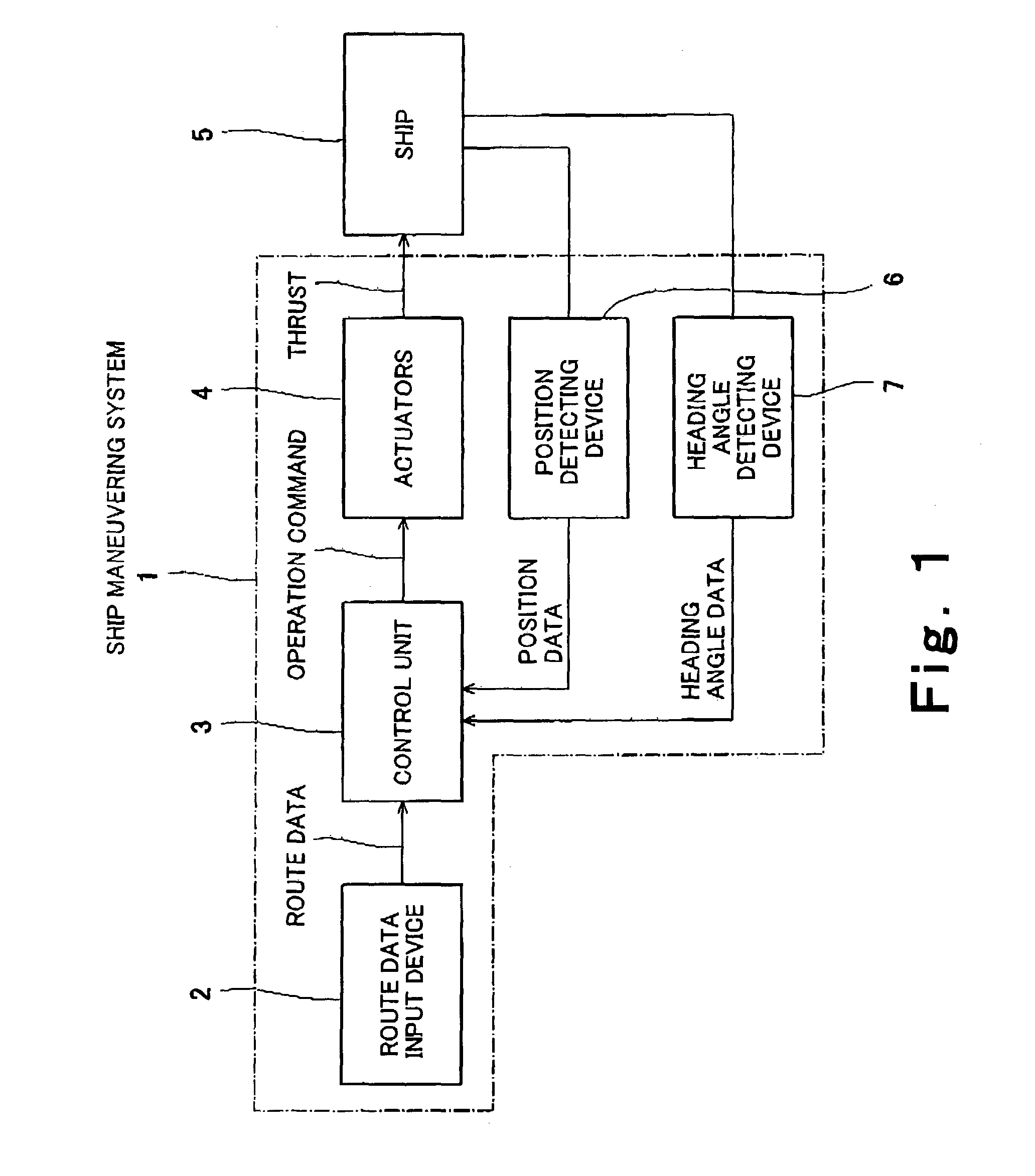Method and system for maneuvering movable object
a technology for moving objects and maneuvering methods, applied in the direction of steering initiations, navigation instruments, instruments, etc., can solve the problems of large amount of power, deviation from the desired ship course, and inability to cope with situations, so as to minimize power in compliance
- Summary
- Abstract
- Description
- Claims
- Application Information
AI Technical Summary
Benefits of technology
Problems solved by technology
Method used
Image
Examples
first embodiment
[0063]FIG. 1 is a block diagram showing a structure of a control system of a movable object maneuver system according to a first embodiment of the invention.
[0064]FIG. 2 is a block diagram showing a structure of the control unit shown in FIG. 1. FIG. 3 diagrammatically shows a layout of individual actuators.
[0065]Referring to FIG. 1, a ship maneuver system 1 exemplifies the movable object maneuver system in the present embodiment. In this embodiment, the movable object is a ship 5. The ship maneuver system 1 has a route data input device 2, a control unit 3, actuators 4, a position detecting device 6, and an heading angle detecting device 7.
[0066]The position detecting device 6 is constituted, for instance, by a GPS (Global Positioning System) and measures the position of the ship 5 to output as positional data. The heading angle detecting device 7 is constituted, for instance, by a gyro compass and measures the heading of the ship 5 to output as data. The route data input device 2 ...
example 1
[0097]FIG. 9 shows a simulation result associated with Example 1. In FIG. 9, the abscissa represents the x coordinate whereas the ordinate represents the y coordinate. Thick lines represent the target position and target heading angle of the ship 5 at the way points WP0 and WP1, respectively. While the ship 5 moves from the way point WP0 to the way point WP1 (with its position changing), the heading angle of the ship 5 changes from the heading angle at the way point WP0 to the heading angle at the way point WP1.
[0098]Where the optimizing control is performed by use of a performance index in which each term is weighed like the equations (1) and (3), if the weights are increased, the performance index increases with the increase in the weights, so that the state of the ship does not become close to the zone where the weights increase. In this example, the weights for the position and heading angle of the ship 5 are set to increase, but the constraint level for them is set to “Loose” (...
example 2
[0099]FIG. 10 shows a simulation result associated with Example 2. In FIG. 10, the abscissa represents the x coordinate whereas the ordinate represents the y coordinate, In this example, the constraint level with respect to the position of the ship is set to “Strict” (extremely great: see FIG. 7), the constraint level with respect to the heading angle of the ship is set to “Loose” (small). Accordingly, the ship 5 substantially sails on the route 101, moving from the way point WP0 to the way point WP1.
PUM
 Login to View More
Login to View More Abstract
Description
Claims
Application Information
 Login to View More
Login to View More - R&D
- Intellectual Property
- Life Sciences
- Materials
- Tech Scout
- Unparalleled Data Quality
- Higher Quality Content
- 60% Fewer Hallucinations
Browse by: Latest US Patents, China's latest patents, Technical Efficacy Thesaurus, Application Domain, Technology Topic, Popular Technical Reports.
© 2025 PatSnap. All rights reserved.Legal|Privacy policy|Modern Slavery Act Transparency Statement|Sitemap|About US| Contact US: help@patsnap.com



